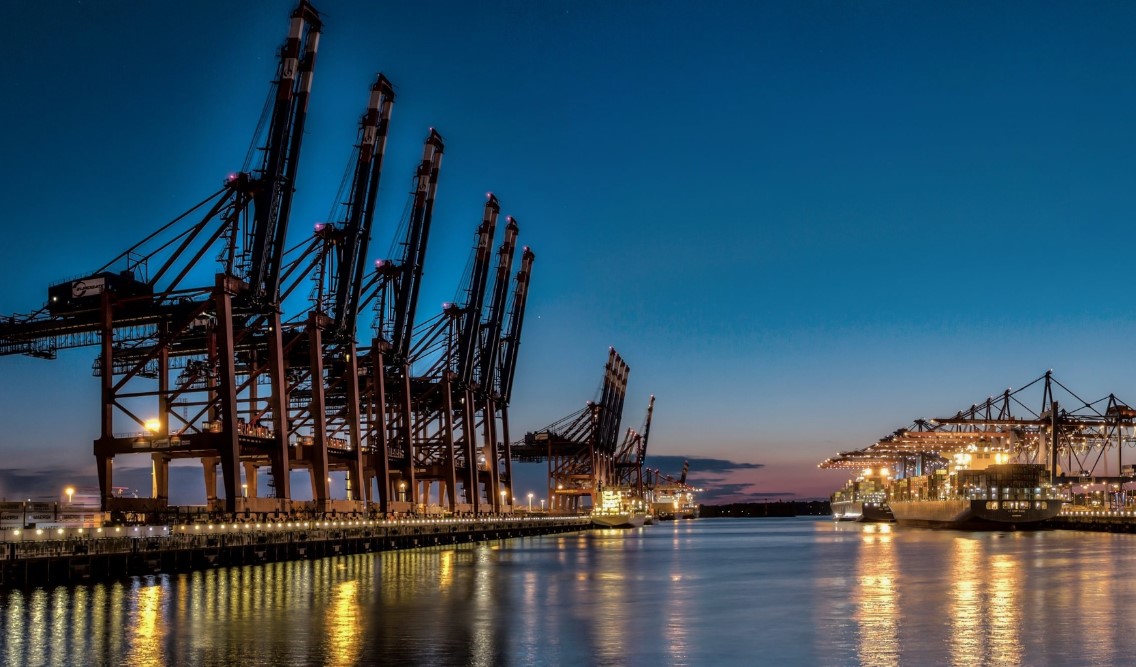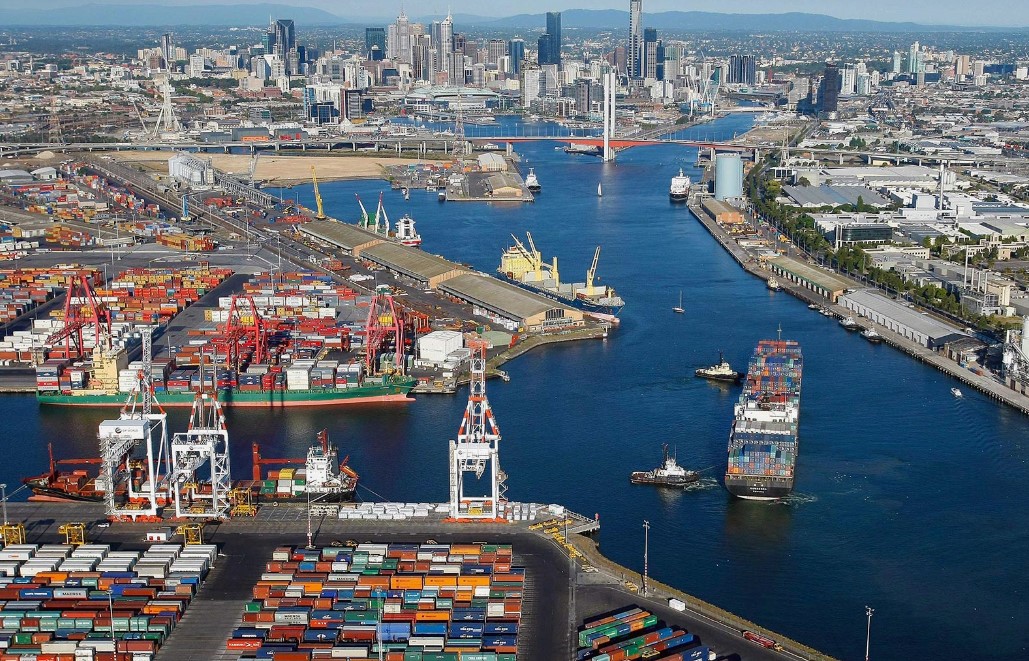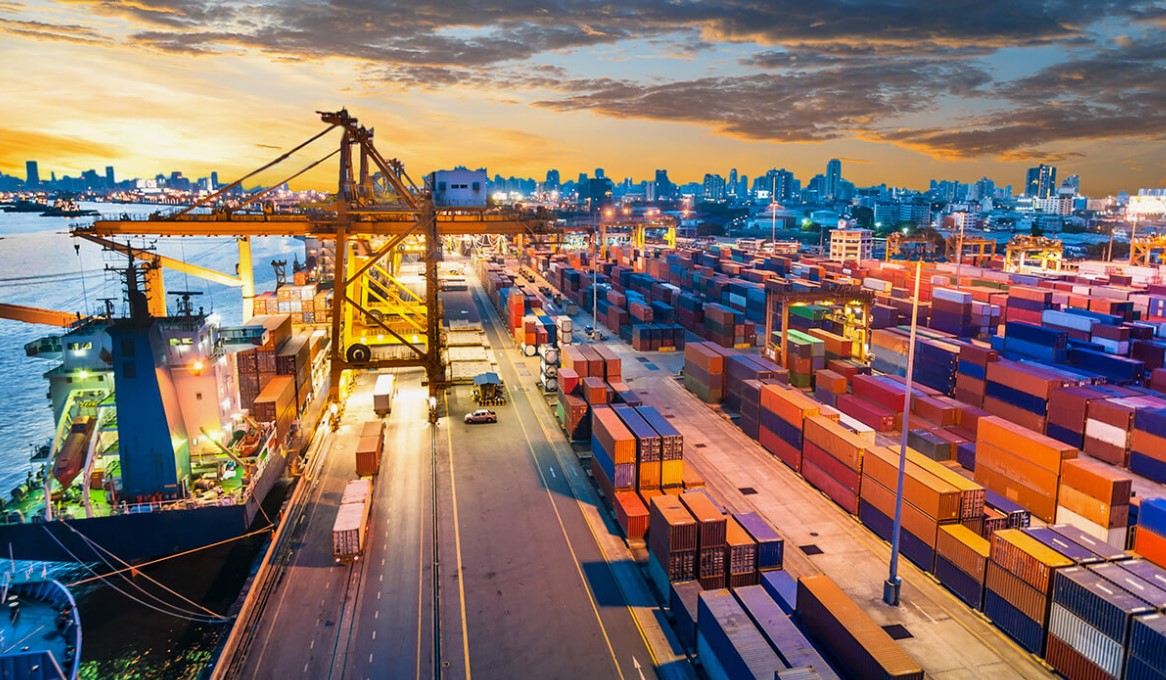Seaports in the United Arab Emirates (UAE) are pivotal to the nation’s transport infrastructure, serving as crucial gateways that connect global trade routes across Asia, Europe, Africa, and the rest of the world. The UAE’s strategic geographical location has not only facilitated its emergence as a vital transit and logistics hub but also positioned it as a key player in international trade. The seaports provide a comprehensive array of logistics solutions and services, including container shipping, bulk and liquid cargo handling, and the servicing of large tankers and container ships. This diverse range of services has spurred the growth of marine engineering companies like the Ghaima Group in Dubai, further cementing the UAE’s role in the global logistics landscape.
The Growing Relevance of Cargo Delivery from UAE Ports
The importance of cargo delivery from the UAE’s seaports has gained significant traction due to a combination of global economic growth and the UAE’s proactive approach to infrastructure development. As the global economy continues to expand, the UAE has effectively positioned itself to accommodate the increasing flow of goods, leveraging its advanced port facilities and strategic location.
Moreover, the UAE’s ports are continuously modernizing, integrating state-of-the-art technologies to streamline cargo delivery processes and enhance transportation efficiency. The adoption of automated control systems, artificial intelligence (AI), and digital technologies like the Internet of Things (IoT) has revolutionized port operations, enabling faster cargo handling and more reliable delivery schedules. These advancements not only improve operational efficiency but also enhance the UAE’s appeal to international companies seeking to optimize their global supply chains.
In addition to infrastructure improvements, the UAE is actively expanding its logistics services, offering innovative solutions that cater to the evolving needs of global trade. The nation’s commitment to enhancing its logistics capabilities is evident in its efforts to attract investment and foster partnerships with international logistics providers. This focus on innovation and service excellence has further solidified the UAE’s position as a leader in global trade, making its seaports indispensable to the international supply chain.
Overview of Key Seaports in the UAE
The UAE is home to several strategically located seaports, each playing a vital role in both regional and global trade. These ports are integral to the nation’s economy and serve as key links in the global transport network.
– Jebel Ali Port: Located in Dubai, Jebel Ali Port is the largest and most renowned port in the UAE. It is one of the busiest container ports in the world, handling a vast array of cargo from various regions. Jebel Ali Port’s advanced infrastructure, extensive facilities, and strategic location make it a central hub for international trade, particularly in the Middle East and North Africa (MENA) region. The port’s significance is further underscored by its role as a key transshipment center, where goods are transferred from one mode of transportation to another, facilitating the smooth flow of global trade.

– Hamriyah Port: Situated in the Emirate of Sharjah, Hamriyah Port is a leading port specializing in the handling of bulk cargo, liquid cargo, and machinery. The port’s versatility and capacity make it an essential part of the UAE’s maritime infrastructure, supporting both the industrial and commercial sectors. Hamriyah Port is also known for its free zone, which attracts a wide range of businesses seeking to capitalize on the UAE’s strategic location and business-friendly environment.
– Port Rashid: Also located in Dubai, Port Rashid is distinguished by its specialization in handling passenger ships, cruise liners, and cargo ships. This port serves as a gateway for tourism and trade, contributing to the diverse economic activities in the UAE. Port Rashid’s facilities are designed to accommodate the growing demand for cruise tourism in the region, making it a key player in the UAE’s efforts to diversify its economy beyond oil and gas.
– Mina Zayed Port: Found in Abu Dhabi, Mina Zayed Port is another critical trade hub in the UAE. It is primarily focused on container cargo and freight, supporting the capital’s growing industrial and commercial sectors. Mina Zayed Port is undergoing significant expansion and modernization efforts to enhance its capacity and efficiency, reflecting Abu Dhabi’s broader economic ambitions.
Infrastructure and Modern Technologies in UAE Ports
The UAE’s seaports are equipped with world-class infrastructure and cutting-edge technologies, ensuring efficient and secure cargo transportation. These ports are designed to handle large volumes of cargo with precision and speed, making them some of the most advanced in the world.
– Container Terminals: The container terminals at UAE ports, such as those at Jebel Ali and Hamriyah, are equipped with the latest handling equipment and technologies. Automated cranes, advanced logistics software, and real-time tracking systems ensure that containers are moved swiftly and efficiently, minimizing delays and reducing operational costs. These terminals are designed to handle the largest container ships, making the UAE a key hub for global shipping.
– Bulk Cargo Handling: Bulk cargo, which includes materials like grain, coal, cement, and metallurgical products, is handled with specialized equipment designed to accommodate the unique requirements of these goods. The UAE’s ports have invested in state-of-the-art bulk cargo handling facilities, including automated conveyors, loaders, and storage solutions that enhance the efficiency of bulk cargo operations.
– Liquid Cargo Terminals: The transportation of liquid cargo, including oil, gas, and chemicals, requires specialized infrastructure and stringent safety protocols. The UAE’s seaports are equipped with dedicated liquid cargo terminals that feature advanced piping systems, storage tanks, and safety monitoring systems. These facilities ensure that liquid cargo is handled safely and efficiently, adhering to international safety and environmental standards.
– Digital Technologies: The UAE’s ports are at the forefront of adopting digital technologies to enhance operational efficiency. The Internet of Things (IoT) enables real-time monitoring of cargo and equipment, improving the accuracy of logistics operations. Artificial intelligence (AI) is used to optimize routing and scheduling, while autonomous systems and robotics are increasingly employed to reduce human intervention and minimize errors. These technologies not only improve the speed and reliability of cargo handling but also contribute to the overall safety and security of port operations.
Types of Cargo Transportation from UAE Seaports
The UAE’s seaports handle a diverse range of cargo, each requiring specialized facilities and expertise. The main types of cargo transportation include container shipping, bulk cargo, and liquid cargo, each playing a critical role in the nation’s trade activities.
– Container Shipping and Container Terminals: Container shipping is the backbone of the UAE’s maritime industry. The container terminals at ports like Jebel Ali and Hamriyah provide comprehensive services for the handling and global transportation of containers. These terminals are equipped with the latest technologies to ensure that containers are loaded, unloaded, and transferred efficiently. The UAE’s strategic location, combined with its advanced container handling capabilities, makes it a key transshipment hub, facilitating the movement of goods between different regions.
– The Role of Bulk Cargo in Exports and Imports: Bulk cargo is a significant component of the UAE’s export and import activities. The nation exports a wide range of bulk goods, including cement, metallurgical products, and agricultural materials. The recent embargo on certain agricultural products has led to an increase in the export of bulk goods, particularly grain. Additionally, the UAE imports bulk cargo such as coal and minerals to support its growing industrial sector. The efficient handling of bulk cargo is essential to maintaining the UAE’s competitive edge in global trade.
– Features of Liquid Cargo Transportation: The transportation of liquid cargo, such as oil, gas, and chemicals, is a highly specialized and regulated process. The UAE’s seaports are equipped with dedicated liquid cargo terminals that feature advanced safety systems and specialized equipment. These terminals are designed to handle the unique challenges associated with liquid cargo, including the need for secure storage, precise temperature control, and leak prevention. The UAE’s expertise in handling liquid cargo has made it a key player in the global energy market, with its ports serving as crucial nodes in the international supply chain for oil and gas.

The UAE’s Strategic Position in Global Trade
The UAE’s seaports play a central role in the nation’s growing influence in global trade and logistics. Their strategic location at the crossroads of Asia, Europe, and Africa, combined with their state-of-the-art infrastructure and top-tier logistics services, has enabled the UAE to become a critical node in the international supply chain.
The UAE’s ports are not only important for the nation’s economy but also for the global economy. They serve as key transshipment centers, where goods are transferred between different modes of transportation, facilitating the smooth flow of international trade. The UAE’s ports are also crucial for the nation’s energy exports, with oil and gas products being shipped to markets around the world.
As the UAE continues to invest in and expand its port capabilities, it is expected to see sustained growth in transport flows and a further strengthening of its position on the world stage. The nation’s commitment to developing its logistics infrastructure, coupled with its strategic location, ensures that the UAE will remain a key player in global trade for years to come.
Future Prospects and Challenges
The future of the UAE’s seaports looks promising, with continued investments in infrastructure, technology, and services. The UAE is expected to see an increase in transport flows, the implementation of even more advanced technologies, and an expansion of cargo delivery routes. However, the nation also faces several challenges that will need to be addressed to maintain its competitive edge in global trade.
– Sustainability and Environmental Concerns: As global attention shifts towards sustainability and environmental responsibility, the UAE’s seaports will need to adopt green technologies and practices to reduce their carbon footprint. This includes investing in renewable energy sources, implementing energy-efficient technologies, and adopting sustainable practices in port operations. The UAE’s commitment to sustainability will be crucial in maintaining its reputation as a leader in global trade.
– Geopolitical and Economic Challenges: The UAE’s strategic location makes it vulnerable to geopolitical and economic challenges, such as regional conflicts, trade disputes, and economic sanctions. The nation’s ports will need to remain adaptable and resilient in the face of these challenges, ensuring that they can continue to operate efficiently and securely.
– Technological Advancements: While the UAE’s seaports are at the forefront of adopting new technologies, the rapid pace of technological advancements presents both opportunities and challenges. The nation’s ports will need to continuously invest in research and development to stay ahead of the curve, ensuring that they can leverage the latest technologies to enhance operational efficiency and competitiveness.
End Note
In conclusion, the UAE’s seaports are indispensable to the nation’s economy and the global supply chain. Their strategic location, advanced infrastructure, and commitment to innovation make them key players in international trade. As the UAE continues to invest in and expand its port capabilities, it is poised to strengthen its position as a global logistics hub, driving economic growth and facilitating the smooth flow of goods across the world.

Football fan, shiba-inu lover, DJ, hand letterer and identity designer. Operating at the fulcrum of modernism and elegance to craft experiences that go beyond design. Let’s chat.
